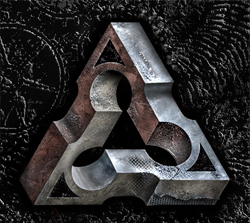Ask Guy, May 2013:
When is a laser necessary?
Q: So I have this horrible tattoo. It's actually already a coverup, and sort of an unfinished jailhouse coverup, if you can imagine that. It's got big areas that aren't shaded or anything, just outlined, but the lines are dark and blown out. The coverup part, which is mainly in the front, is dark and messy. It's a big part of my upper arm, and I'm ready to go to a half sleeve. The artist I talked to said I should consider getting lasered, but I looked into it and it's expensive, and I know the ink doesn't come out completely. Long story short: Is it worth it?
A: Well, for starters, you are talking to a guy who has had both arms lasered and re-tattooed, so you can probably guess that I'll recommend getting some laser treatments. But you are right that it can be costly, and in fact laser treatments are no fun at all- many feel that it's quite a bit worse than getting tattooed (although a lot quicker). And it's also true that the results are limited, and it can take four to six sessions to get significant lightening on a dark tattoo, like what you are describing. But depending on your situation, it can be very worthwhile.
Since it sounds like you are taking your tattoo collection seriously, remember that this is your arm, some of the most prime real estate on your body. You see this skin in the mirror when you brush your teeth. So if it's already a bad situation, you really don't want to run the risk of making it worse. The big blown out lines you describe sound like the kind of thing that can really limit the options in a coverup project. The thing about the laser is that it opens up your options, allowing you to get a tattoo that is far less compromised by the presence of the old junk.
Most coverups I do are on lasered skin. But there are cases where I'll just cover an old piece in the normal way, with no laser, and I'm always reminded of what a challenge it can be. In Fig. 1 is an old pair of wings. They were fairly light and faded, and only occupied a small area of the overall backpiece that we were doing, so she opted to pass on the laser treatments. The big challenge that the wings presented were those outlines- thick, regular, and all running parallel to each other. It is the structure of the old design, as much as its darkness, that needs to be overwhelmed by the new piece.
The old fashioned answer would be to go really dark in that area. But that always looks like a coverup, and you're usually able to see evidence of the old piece anyway. In reality, simply going dark is not the best way to hide a tattoo. Texture, patterns and other detail can be just as effective at hiding the old piece without the need to go so dark. For this project we designed a stylized bird mask with a lot of feather detail (Fig. 2). Although the new design consists of large, high-contrast flowing shapes, the detail within these shapes is what allows us to cover the old piece effectively.
An important thing to remember is that you aren't covering the old tattoo- you are incorporating it, absorbing it. After the first two years the superficial pigments have healed out, leaving the permanent part of the tattoo. This pigment settles into the same layer of skin as the old unwanted tattoo, so it isn't actually "over" the old piece at all, but mixed in with it. So the trick is in finding the right approach to the new design where the old stuff can be made into part of the new tattoo.
With the bird mask, you can see how in the first session (Fig. 3) we tried to get a pass of color over the entire coverup area, knowing that it would need another pass later. You can see how the detail in the feathers readily absorbs the unwanted old stuff without going very dark at all. At the same time, we've made a point of giving the design's larger shapes plenty of contrast and clarity so it can read clearly from a distance. Then a few months later we did another pass of color over the whole thing, using a large round liner to work more detail, color, and highlights through the whole mask, with the goal of making the areas both inside and outside the coverup zone look consistent with each other (Fig. 4). This balance is a challenge to achieve, and even with the best healing results I'd still like to get a third pass in there to get rid of any remaining evidence of the wings. And some hint of it may still show in the long term- such is the nature of coverup tattooing.
.jpg)
.jpg)
Fig. 1-4: In some cases you can get decent results without the use of a laser. But some hint of the old tattoo is bound to be visible even after several passes; only with an extremely light tattoo can this really be prevented
.jpg)
Fig. 5-8: The laser can be a game-changer for anyone willing to endure the extra pain and expense, opening up all kinds of new possibilities for coverup tattooing
So you can see that without use of a laser there are definite limits to what can be achieved with a coverup. Results can be improved if both client and artist are willing to do enough followup passes over the piece, but after a certain point this extra tattooing will exceed the expense and pain of getting laser sessions done in the first place. With many unwanted tattoos, the laser is simply the option that makes the most sense. Treatments are becoming far more accessible and affordable, making laser work an option for most dedicated collectors. If you're aiming for an overall vision for your collection, now is the chance to avoid getting work that is obviously a coverup.
In Fig. 5-6 is a black and gray piece, before and after two laser sessions. The old piece is dense, with lots of squirmy little lines filling the space. You can see how the laser didn't remove the tattoo entirely, but broke it up enough to give us a lot of new choices while making the old work much lighter and easier to overwhelm with new work. It's worth noting that tattoos that have been lasered will continue lightening for a year or more, often after the coverup has been done. That's one of the reasons that laser coverups sometimes call for a quick touchup a year after settling into the skin.
Fig. 7 shows the marker drawing. The new design has a few big shapes with strong black lines and deep shading behind them to create strong contrast; at the same time, fine detail is used throughout the piece to hide the unwanted old work. The resulting look has a rich surface treatment that is hard to achieve outside laser coverup projects (Fig. 8). Internal detail is kept lighter than the outlines as not to compete with them. You can see that we got some attractive results without the need for a lot of laser sessions, although every project is different.
So it's not a simple question, whether you should get laser treatments or not. My advice is to have it done if you can, but it isn't necessary in all cases. You also have the option of getting the new piece outlined and shaded, then having small selective parts of the old piece lasered in between the new work. I've had a number of clients with large-scale coverup projects handle it this way, which allowed for great results with less time under the laser. But this approach does require more planning and cooperation between artist, client, and laser practitioner. Be sure that you know the limits of the people you're working with before diving into a complex project like this.
Whatever you decide, I wish you the best of luck. Remember that the best solutions are not always the most convenient ones. And be sure you have a clear sense of communication with your new tattooist. This time around, you definitely want to get it right.























